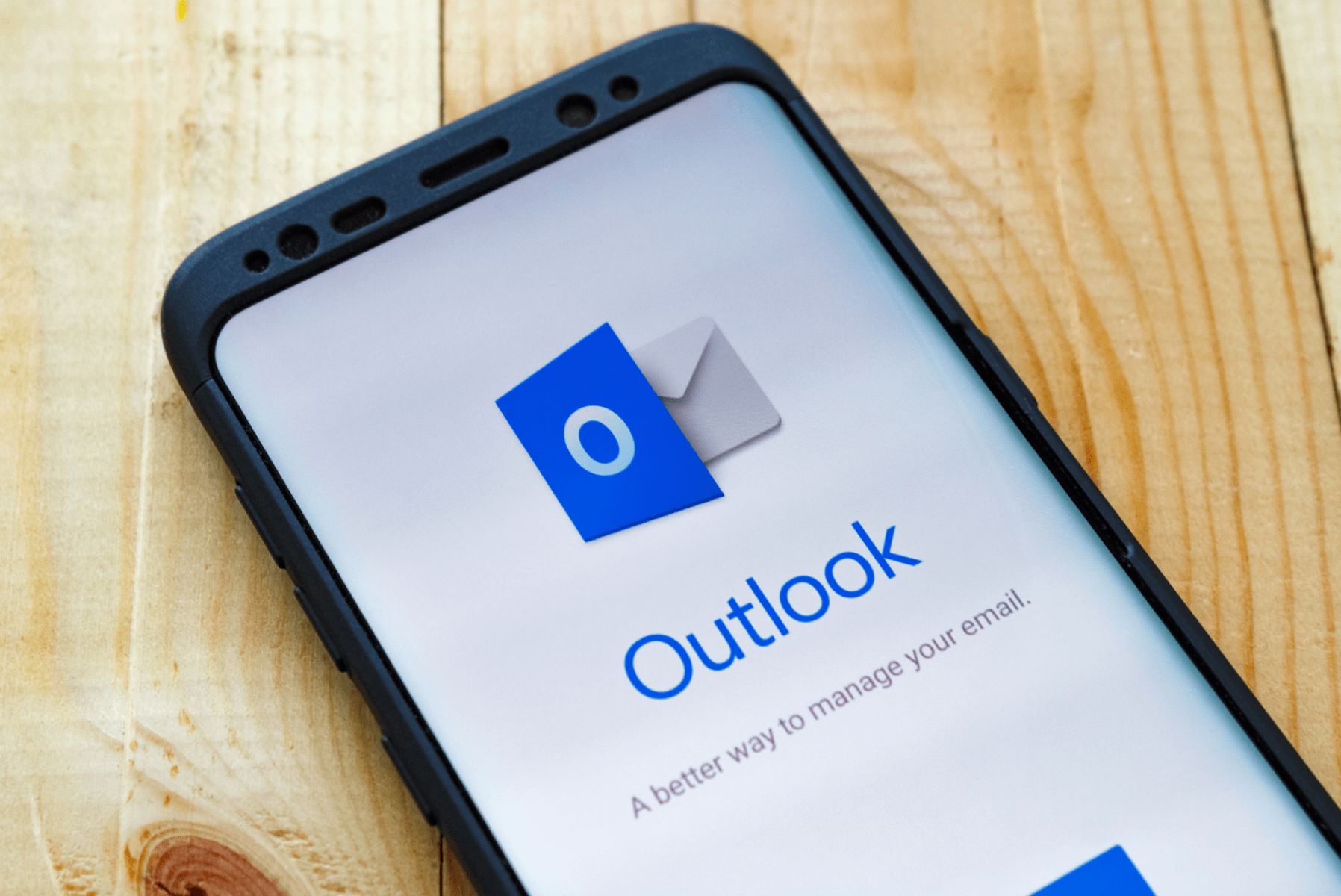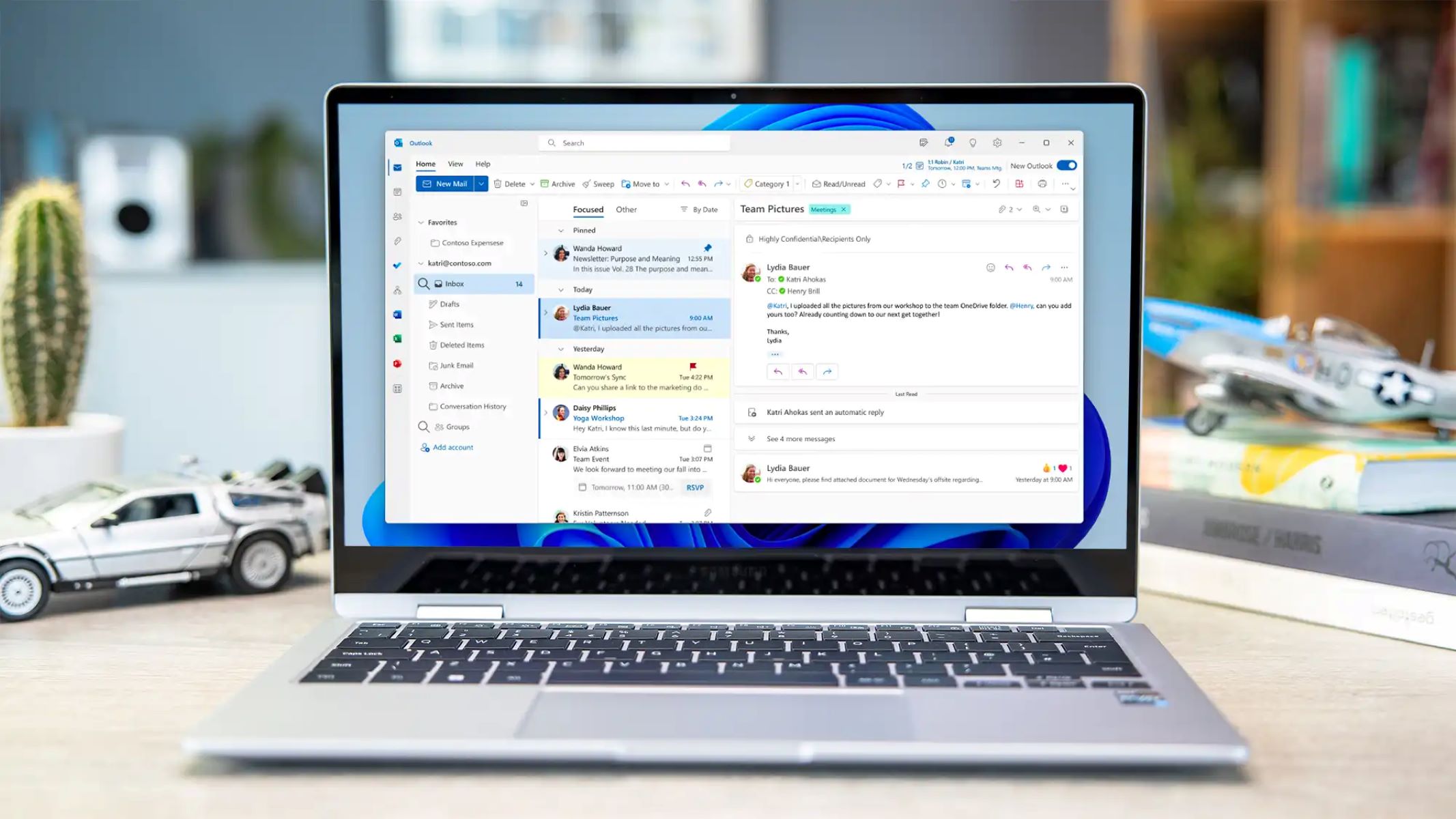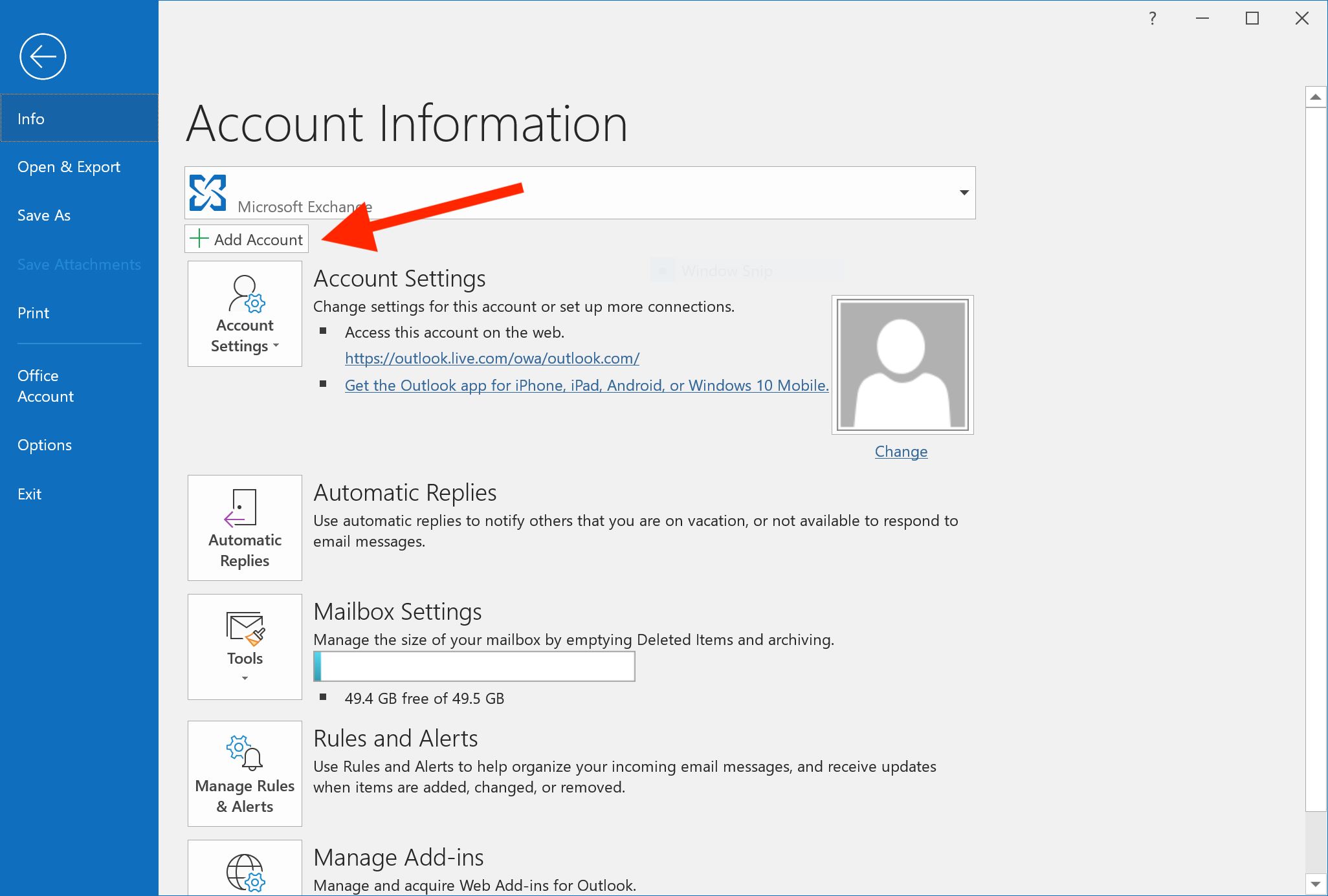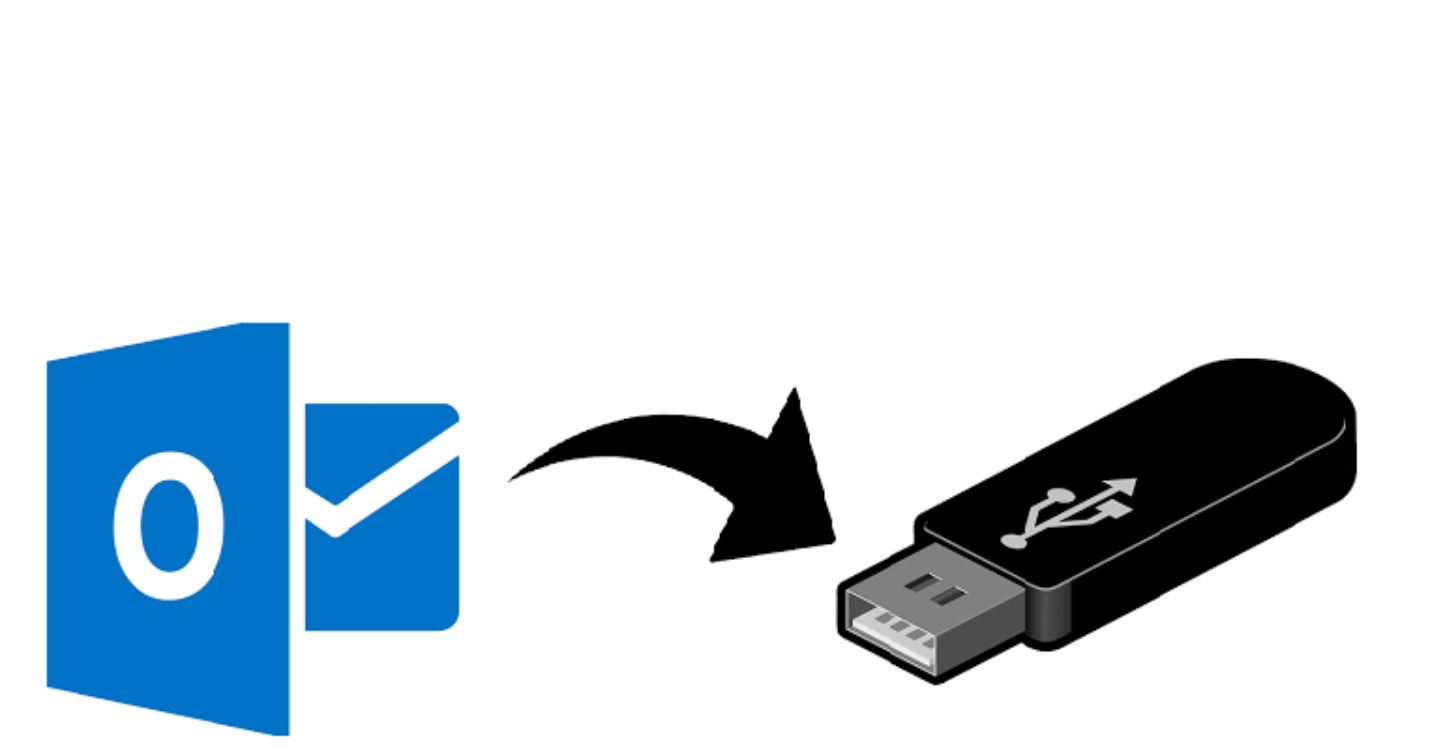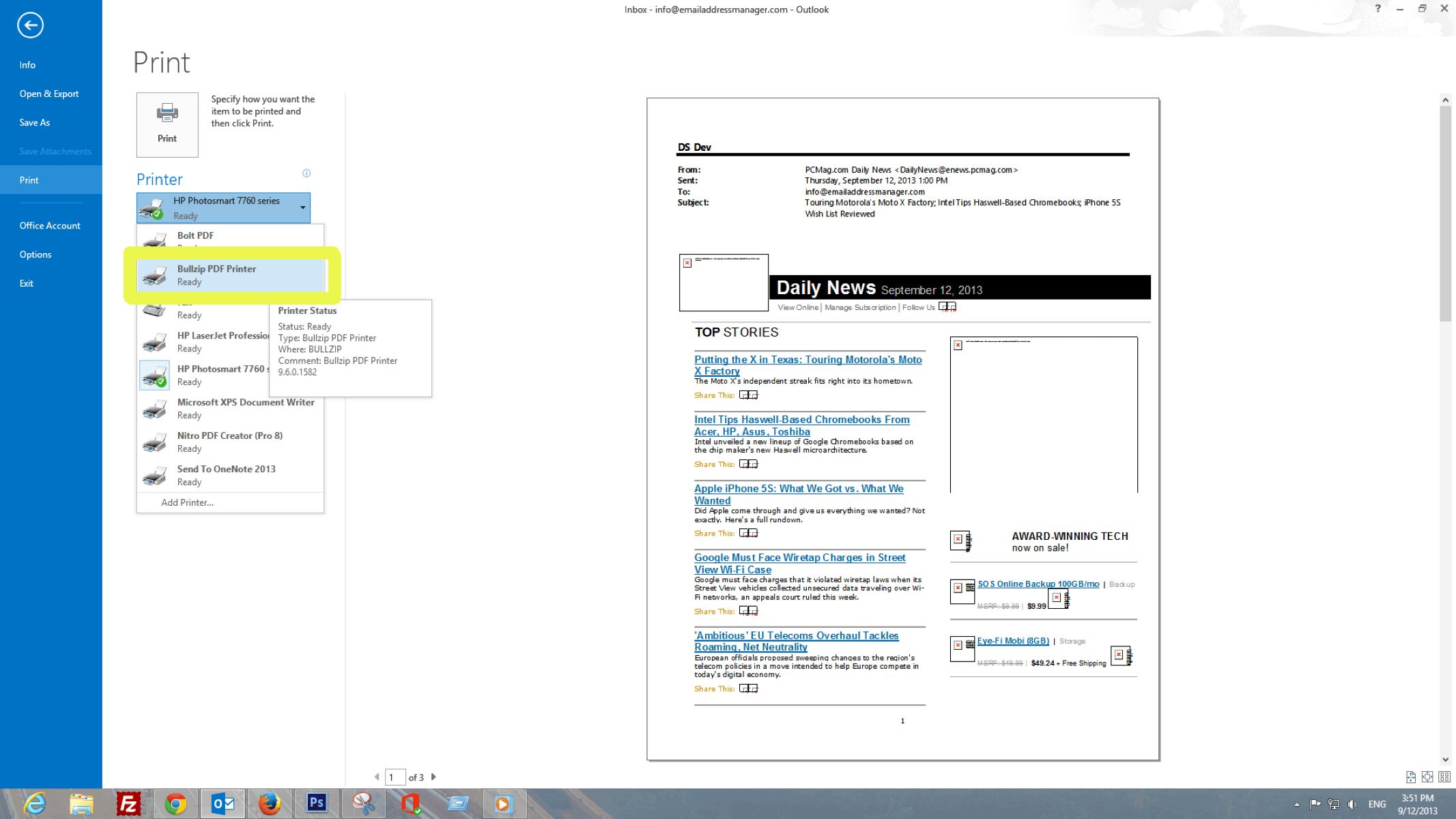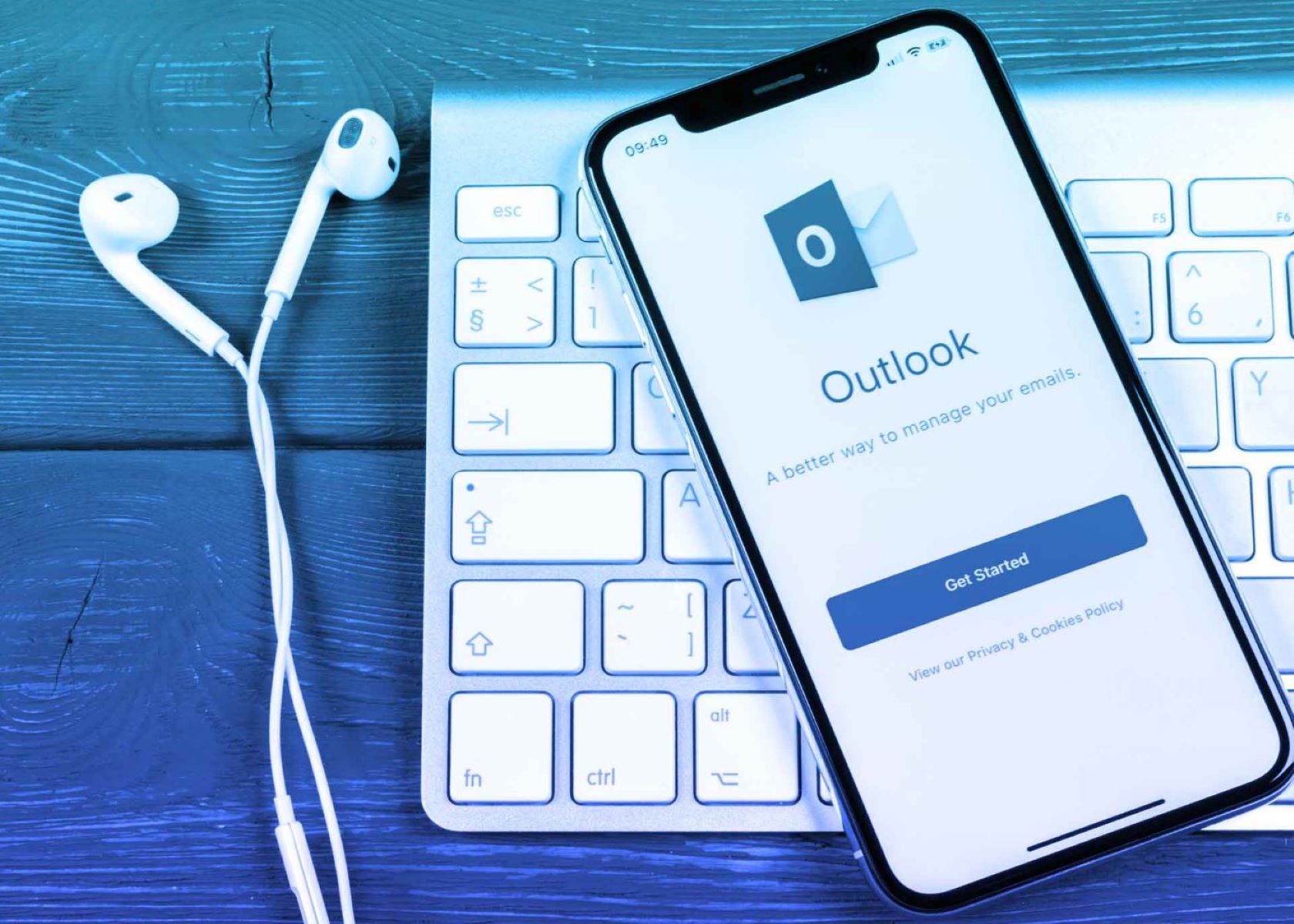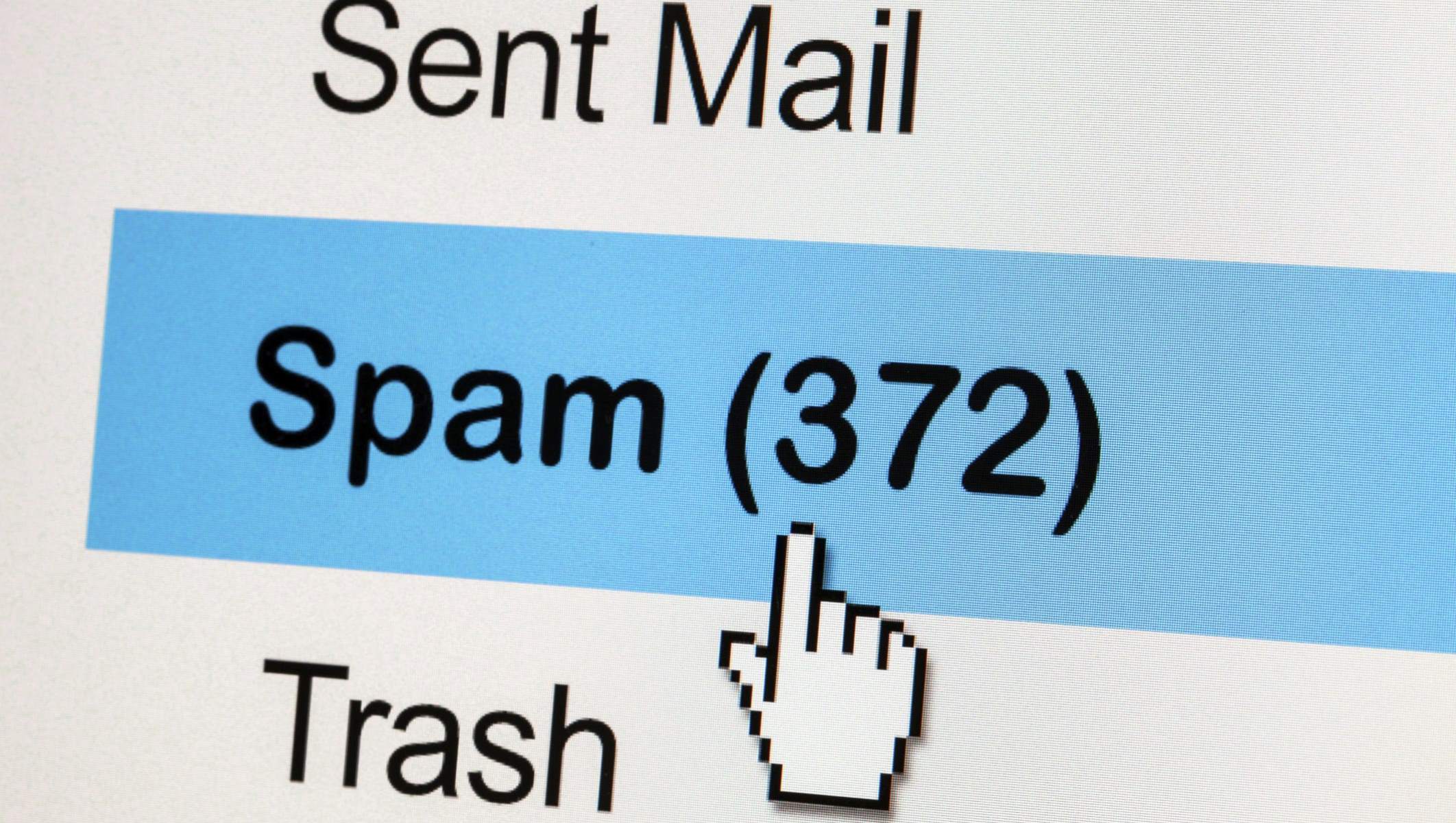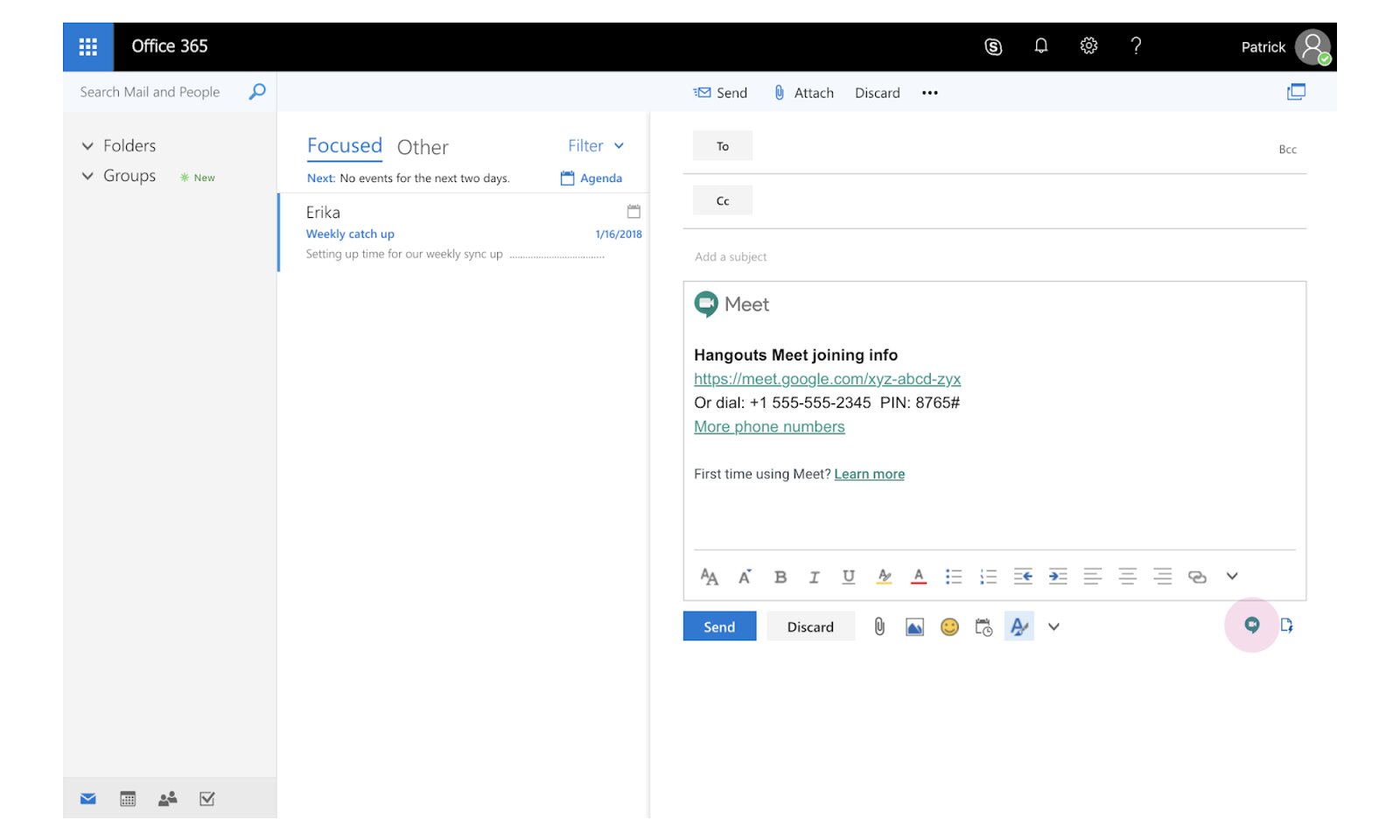Introduction
With the increasing reliance on email for both personal and professional communication, it is crucial to ensure the security of your emails. Microsoft Outlook, one of the most popular email clients, provides several features and settings that can help safeguard your sensitive information from unauthorized access and protect you from potential threats. In this article, we will explore some essential steps you can take to secure your emails in Outlook.
Email security entails more than just choosing a strong password. It involves implementing additional layers of protection, such as enabling two-factor authentication, encrypting your emails, using secure connection settings, and being vigilant against phishing attacks and spam. By following these guidelines, you can minimize the risk of unauthorized access to your email account and protect your confidential information from falling into the wrong hands.
In the following sections, we will delve into each of these measures in detail, providing you with practical tips and insights on how to enhance the security of your email account in Outlook. By implementing these recommendations, you can enjoy the convenience of email communication while ensuring the privacy and integrity of your messages.
Choosing a Strong Password
When it comes to securing your email account, one of the fundamental steps is choosing a strong and unique password. A strong password serves as a barrier against unauthorized access attempts, protecting your sensitive information from being compromised. Here are some essential guidelines to help you create a robust password for your Outlook account.
1. Length and Complexity: Select a password that is at least 8 characters long and includes a combination of uppercase and lowercase letters, numbers, and symbols. Avoid using obvious choices like “password” or “123456,” as these are easily guessable.
2. Avoid Personal Information: Do not use personal information such as your name, birthdate, or address in your password. Cybercriminals can easily research this information, making it easier for them to crack your password.
3. Unique Passwords: Avoid reusing passwords across multiple accounts. If one account gets compromised, having a unique password for each account ensures that the damage is limited and doesn’t spread to other accounts.
4. Passphrase Option: Consider using a passphrase instead of a single word. Passphrases, consisting of multiple words, are longer and more secure. For example, “CorrectHorseBatteryStaple” is much harder to crack than a single word password.
5. Regularly Change Passwords: It’s important to periodically change your passwords to reduce the risk of unauthorized access. Set a reminder to update your passwords every few months or when there is a potential security threat.
Remember, a strong password is your first line of defense against hackers and cybercriminals. By following these guidelines and avoiding common pitfalls, you can significantly increase the security of your Outlook email account.
Enabling Two-Factor Authentication
Two-factor authentication (2FA) adds an extra layer of security to your Outlook email account by requiring a second form of verification in addition to your password. This additional step ensures that even if your password is compromised, unauthorized individuals still cannot gain access to your account. Enabling 2FA is a highly recommended security measure to enhance the protection of your email account. Here’s how you can enable it in Outlook.
1. Access Account Security Settings: Log in to your Outlook account and navigate to the Account Security settings. This may vary depending on the version of Outlook you are using, but it is typically found in the account settings or security options.
2. Enable Two-Factor Authentication: Look for the option to enable two-factor authentication and follow the instructions provided. Outlook might offer various 2FA methods, such as receiving a verification code via text message, email, or using an authentication app.
3. Set Up Verification Method(s): Choose the verification method(s) that are most convenient and secure for you. It is recommended to select multiple methods to ensure you have backup options in case one method is unavailable.
4. Verify Your Identity: Once you have set up 2FA, Outlook will prompt you to verify your identity via the selected method(s) before granting access to your account. This verification could involve entering a code received via text or email, or providing a confirmation through an authentication app.
By enabling two-factor authentication, you add an extra layer of security that significantly reduces the chances of unauthorized access to your Outlook email account. Even if someone manages to obtain your password, they would need to bypass the additional verification step to gain control of your account.
It’s important to note that 2FA does not guarantee absolute security, but it significantly enhances the protection of your account. Make sure to periodically review and update your 2FA settings to ensure you have the most secure options available.
Encrypting Emails
Encrypting your emails adds an extra layer of protection, ensuring that only the intended recipient can access the contents of your messages. Email encryption scrambles the information within the email, making it unreadable to anyone without the decryption key. Outlook provides a straightforward method for encrypting your emails to safeguard sensitive information. Here’s how you can enable email encryption in Outlook.
1. Install a Digital Certificate: Before you can encrypt emails, you need to obtain a digital certificate. This certificate serves as a digital ID that verifies your identity and enables secure communication. You can obtain a digital certificate from a trusted certificate authority or your organization’s IT department.
2. Exchange Digital Certificates: Ensure that the recipients you want to send encrypted emails to also have digital certificates installed. This allows both parties to encrypt and decrypt messages using their respective certificates.
3. Compose an Encrypted Email: Once the digital certificate is installed, you can compose a new email or reply to an existing one. In the message window, click on the “Options” tab and select “Encrypt” from the “Permission” section. This will encrypt the email before you send it.
4. Verify Encryption: Before sending the email, double-check that the padlock icon appears in the email header. This signifies that the email is encrypted and will be securely delivered to the recipient.
By encrypting your emails, you add an additional layer of protection to sensitive information, such as financial records, personal details, or confidential business data. It ensures that even if an unauthorized individual intercepts the email, they cannot decipher its contents without the decryption key.
It’s important to note that both the sender and recipient must have digital certificates installed for email encryption to be effective. If the recipient does not have a digital certificate, you can still send them an encrypted email, but they will need to obtain a certificate to decrypt and read the message.
Using Secure Connection Settings
Configuring secure connection settings in Outlook is essential to protect your emails and ensure that your communication remains private and secure. By enabling secure connection settings, you can encrypt the data transmitted between your Outlook client and the mail server, preventing unauthorized access and potential interception of your emails. Here are some important steps you can take to enhance the security of your email connections.
1. Use SSL/TLS Encryption: Secure Sockets Layer (SSL) and Transport Layer Security (TLS) protocols provide encryption for communication between your Outlook client and the mail server. Ensure that you have enabled SSL or TLS encryption in your account settings to encrypt your email traffic. This prevents eavesdroppers from intercepting and decrypting your sensitive data.
2. Verify Server Certificate: When setting up your email account in Outlook, verify the server certificate to ensure that it is valid and issued by a trusted certificate authority. This helps you avoid connecting to fraudulent or compromised servers that may attempt to intercept or tamper with your emails.
3. Confirm Server Address: Double-check that the server address you are connecting to matches the official address provided by your email service provider. Avoid using unfamiliar or suspicious server addresses, as they might redirect your emails to unauthorized sources or compromise the security of your communication.
4. Enable Encrypted Authentication: In addition to encrypting the data transmission, use encrypted authentication methods such as Secure Password Authentication (SPA) or OAuth. These methods provide secure authentication between your Outlook client and the mail server, ensuring that your login credentials remain protected during the authentication process.
By using secure connection settings, you mitigate the risk of unauthorized access and interception of your email communication. These settings establish a secure channel for your data transmission, safeguarding your sensitive information from potential security threats.
Remember to keep your Outlook client updated with the latest security patches and updates provided by Microsoft. Regularly checking for and applying these updates ensures that you have the most secure version of Outlook, with any known security vulnerabilities patched.
Avoiding Phishing Attacks
Phishing attacks are a common method used by cybercriminals to trick individuals into revealing sensitive information or downloading malicious software. These attacks often come in the form of deceptive emails that appear to be from legitimate sources, such as banks, social media platforms, or even trusted organizations. Outlook provides several features and best practices to help protect you from falling victim to phishing attacks and keeping your sensitive information secure. Here are some essential steps you can take to avoid phishing attacks.
1. Be Vigilant: Exercise caution and remain vigilant when receiving emails, especially those requesting personal information, financial details, or login credentials. Be wary of urgent or threatening language, grammatical errors, or requests for immediate action. If something seems suspicious, trust your instincts and investigate further.
2. Verify Sender’s Identity: Before clicking on any links or opening attachments in an email, verify the sender’s identity. Check the email address carefully to ensure it matches the official email address of the organization or individual it claims to be from. Hover over hyperlinks to view the actual URL before clicking on them, as phishing emails often use deceptive links.
3. Avoid Untrusted Links: It’s best to manually type the URL of a website instead of clicking on links provided in emails. This way, you can ensure you are visiting the legitimate website rather than being redirected to a phishing page designed to collect your credentials or personal information.
4. Enable Spam Filters: Outlook’s built-in spam filters can help identify and block potential phishing emails, reducing the risk of encountering phishing attacks in your inbox. Make sure to enable and regularly update the spam filters for maximum protection.
5. Keep Software Updated: Regularly update your Outlook software to ensure you have the latest security patches and features that can help protect against phishing attacks. These updates often include improvements in detecting and blocking suspicious emails or links.
6. Educate Yourself: Stay informed about the latest phishing techniques and common phishing email indicators. Microsoft regularly publishes security awareness resources and information on phishing attacks, which can help you stay up to date and recognize potential threats.
By following these precautions and staying cautious, you can significantly reduce the risk of falling victim to phishing attacks. Remember, it is crucial to remain skeptical and verify the authenticity of any email or request for personal information, even if it appears to be from a trusted source.
Identifying and Reporting Spam
Spam emails are not only a nuisance but can also pose a security risk by containing malicious links or attachments. Outlook provides several features and tools to help you identify and report spam emails, allowing you to keep your inbox clean and protect yourself from potential threats. Here are some important steps you can take to identify and report spam in Outlook.
1. Enable Junk Email Filter: Outlook has a built-in Junk Email filter that automatically moves suspected spam emails to the Junk folder. It uses various criteria to identify spam, including sender reputation, message content, and user-defined settings. Ensure that the Junk Email filter is enabled and regularly check the Junk folder for any false positives.
2. Be Wary of Unknown Senders: Exercise caution when receiving emails from unknown senders, particularly if they contain suspicious subject lines or come from unfamiliar domains. If an email seems unsolicited or irrelevant, it may be a spam message.
3. Check for Red Flags: Look out for common indicators of spam emails, such as poor grammar, spelling mistakes, generic greetings, or requests for personal information. These red flags can help you identify potential spam emails that should be avoided or flagged for further investigation.
4. Don’t Click on Suspicious Links or Attachments: Avoid clicking on links or downloading attachments from spam emails, as they may lead to malicious websites or initiate the installation of malware on your device. Exercise caution, even if the email appears to be from a reputable source.
5. Report Spam: Outlook provides an option to report suspected spam emails. This helps Microsoft analyze and block similar spam messages from reaching other users. Select the spam email and click on the “Junk” option in the Outlook toolbar, then choose “Report as Junk” or “Report as Phishing” to notify Microsoft of the spam message.
By promptly reporting spam emails, you not only protect yourself from potentially harmful content but also contribute to the overall spam prevention efforts. It helps improve the effectiveness of spam filters and reduces the impact of spam messages on other users.
Remember to regularly review your Junk folder to ensure that legitimate emails don’t get mistakenly marked as spam. By keeping your inbox clean and reporting spam, you can maintain a safer and more secure Outlook email experience.
Regularly Updating Outlook Software
Keeping your Outlook software up to date is crucial for maintaining the security and integrity of your email account. Microsoft regularly releases updates that include important security patches, bug fixes, and new features that enhance the overall performance of the application. By regularly updating your Outlook software, you can ensure that you are benefiting from the latest security measures and staying protected against potential vulnerabilities. Here’s why it’s important to keep your Outlook software updated.
1. Security Patches: Software updates often include security patches that address vulnerabilities and protect your Outlook email client from new and emerging threats. These patches help prevent unauthorized access, data breaches, and the installation of malware or viruses that can compromise your email security.
2. Bug Fixes: Updates also contain bug fixes that improve the stability and functionality of the application. Bugs can cause crashes, data loss, or unexpected behavior, so it’s important to stay up to date with the latest fixes to ensure a smooth and trouble-free email experience.
3. Performance Enhancements: Updates may introduce performance enhancements that optimize the speed, responsiveness, and overall performance of Outlook. These improvements can help streamline your email management and boost productivity.
4. Compatibility: Microsoft often releases updates to ensure compatibility with new operating systems or other software applications. By staying updated, you can avoid potential compatibility issues that may arise if you are using outdated software versions.
5. New Features: Updates sometimes bring new features and functionality to Outlook, offering enhanced email management capabilities, improved user interfaces, or access to new services. By updating your software, you can take advantage of these new features and optimize your email workflow.
To ensure that your Outlook software stays updated, enable automatic updates or regularly check for updates manually. Automatic updates will notify you when a new update is available, allowing you to install it with just a few clicks. Alternatively, you can manually check for updates by going to the Outlook settings and selecting the appropriate option for software updates.
By keeping your Outlook software updated, you can maximize the security, performance, and functionality of your email client. Regular updates provide proactive measures to address potential vulnerabilities and ensure that you are using the latest features and improvements available.
Conclusion
Securing your email in Outlook is of utmost importance to protect your personal and sensitive information from unauthorized access and potential threats. By following the steps outlined in this article, you can significantly enhance the security and privacy of your email account.
Choosing a strong password, enabling two-factor authentication, and encrypting your emails are essential measures to safeguard your information. Utilizing secure connection settings, being vigilant against phishing attacks, and reporting spam emails help you stay protected from cyber threats. Additionally, regularly updating your Outlook software ensures you benefit from the latest security patches, bug fixes, and performance enhancements.
Remember that email security is an ongoing process. It’s important to stay informed about the latest security practices, remain vigilant when interacting with emails, and adjust your security settings as needed. By adopting these best practices and staying proactive, you can maintain a secure and protected email experience in Outlook.
By implementing these measures and staying informed about email security best practices, you can reduce the risk of unauthorized access and keep your sensitive information safe. Prioritize securing your email in Outlook, and enjoy the benefits of a secure and protected communication platform.







